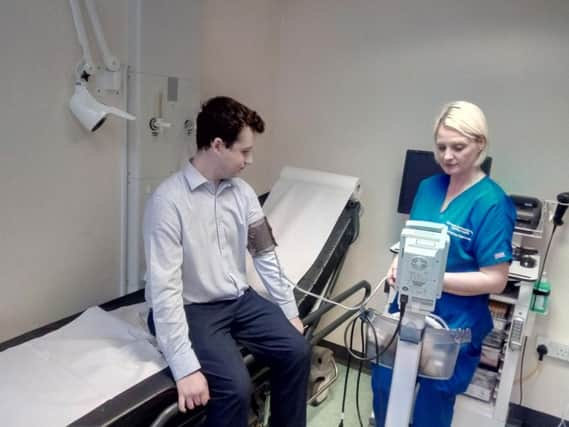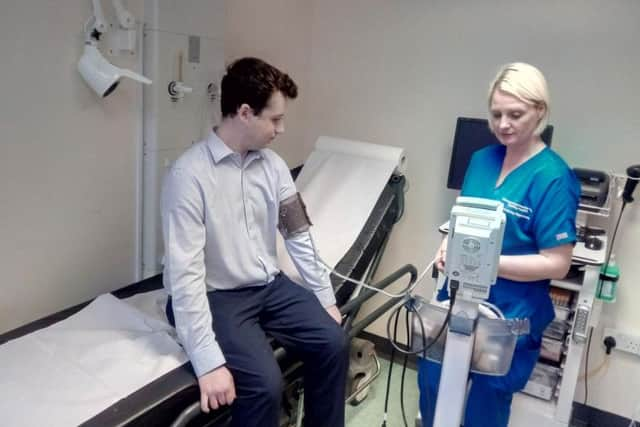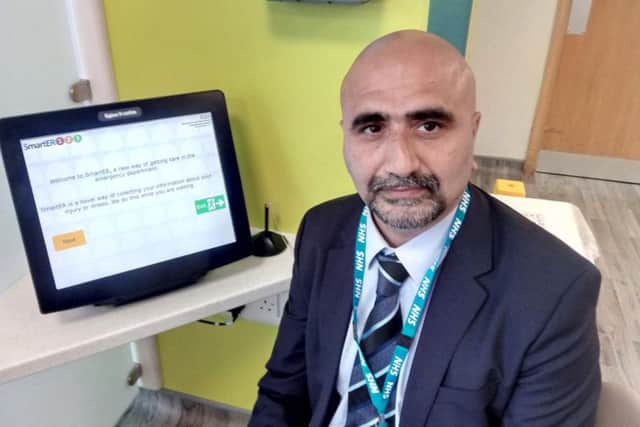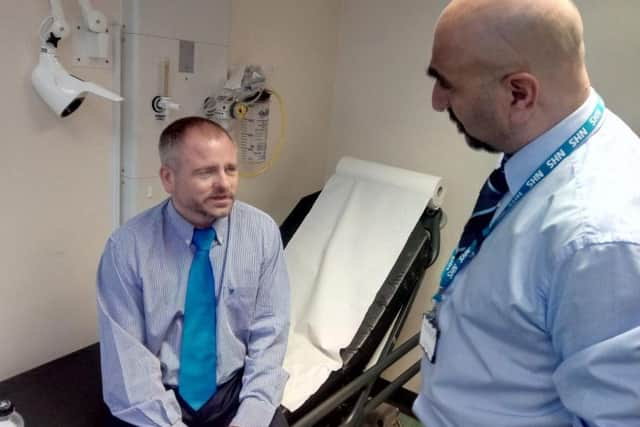Doncaster hospitals bid to transform A&E times using new technology


To meet official targets, the Doncaster and Bassetlaw Teaching Hospitals Trust is supposed to see 95 per ent of patients arriving their withing four hours. In January it figure was 87.7 per cent, which is still better than most in the country.
In January, 13,685 patients turned up at the department. And 1,680 waiting more than four hours.


Advertisement
Hide AdAdvertisement
Hide AdThe main breach reason was the wait to see doctor, accounting for 1,013 of the 1680 breaches, with 285 breaches due to bed pressures. It was an improvement on January 2017, which saw an improved performance of 2.9 per cent with 345 fewer patients breaching the target with 363 more attendances.
But bosses at the trust are hoping a new plan will start to turn the tide - by using the time that the patients spend waiting to provide important information to the doctors.
Medics at the hospital believe they are the first site in the world to bring in the new system, which has just gone live, and has been named Smart ER.
When patients arrive, they go to reception. If they have arrived in an ambulance with a life threatening condition, they will be sent straight to medics, as they are at present.


Advertisement
Hide AdAdvertisement
Hide AdOtherwise, they will be referred to a computer console. There, they will be asked to fill in a number of questions that will give them a chance to go into detail about their symptoms. Most of the questions are answered by pull-down menus, but there is space to go into more detail.
The details are then passed onto a one of the clinical staff - meaning they do not have to spent time later asking the patient about what is wrong with them. It also allows them to disclose previous medical problems.
It is expected to shave time off the wait, and also provide something for the patient to do while they are waiting.
The project has been led by Dr Amjid Mohammed, and he says it has already attracted inquiries from hospitals in the UK and around the world.


Advertisement
Hide AdAdvertisement
Hide AdHe said: "We've been developing this for four years, and it has now gone live.
"At the moment it's text heavy, but we want to develop it in the future, so you can click on a picture of a body part where you are hurting.
"I think it is extremely helpful for the consultation for the patient, as they can tell us exactly what is wrong with them. Traditionally that information has been taken by a doctor who has had a quick conversation. This way, the patient, who has lots of waiting time, can put together the information we need, at their own pace.
"This is the first change made the the way we handle A&E for 40 or 50 years, when the departments were first set up. It is the same where ever you go in the world."
Advertisement
Hide AdAdvertisement
Hide AdHe added it also removed the possibility of doctors making mistakes in their note taking, and the information came straight from the patient.
There are plans to expand the system in future to the children's hopsital. The trust is working with Sheffield Children's Hospital to move that project forwards.
There are also plans to allow patients to input the information on their own smart phones. This will not be done until suitable computer security is in place to protect information. Under that scheme, the patients would also be able to track their wait and would get updates on their treatment while they waited. This could see them sent explanations on issues such as blood tests, or information about their symptoms. There are also proposals to use this to offer people first aid training.
DRI Emergency nurse practitioner Helen Rowing said she thought the new system had worked well since it was brought in. She said: "The patient can put their symptoms in their own words. I put a screen up and it goes straight to the information I need, and the patients don't have to keep going over it with everyone they see."
Advertisement
Hide AdAdvertisement
Hide AdA&E consultant Sanjay Sinha added: "The patients gets to explain what has happened better than if we took their history. I've never seen this done in any places I've worked before.
"The patient's satisfaction is better when they get to me."
The project was initially piloted at the trust's Montagu Hospital, in Mexborough, with feedback stating 95 per cent of patients found the new system to be a good use of time, with 98 per cent of staff asked in agreement.
The patient
Among those who have used the new system is Richard Somerset, a 41-year-old public sector procurement worker in Doncaster.
He head to the DRI after he was hurt playing football, suffering an ankle injury. after arriving at A&E, he was sent to one of the new Smart ER terminals to fill in details.
Advertisement
Hide AdAdvertisement
Hide AdI was playing in an over 35s league. I'm quite quick so they put me out on the wing, and I got knocked over by a full back. He then landed on my ankle and I heard a crack. That was on the Saturday, and the pain has got worse, so I came into A and E on the Thursday. I spoke to a few people at work and they advised me to get it looked at."
"I found the system was good - it was straight forward and user friendly. I answered all the questions, but I think they should have options not to answer on some of them, where they are asking questions like do you drink alcohol or take drugs, or if you have been a victim of abuse.
"It said it would take 15 minutes, but it didn't take that long, and it went into a lot of detail which should be good for their assessment."
Richard, who visited the department in the morning, was in and out within two hours - well within the limit.
Advertisement
Hide AdAdvertisement
Hide AdHe had an X-ray which revealed some damage to the bone but no break - just a bad sprain.
"I must have been there at the right time," he said. "It looked like it was getting busier then I left though.
"The doctor had the notes I'd made, and didn't really have to ask me anything, because I'd already given him the information."